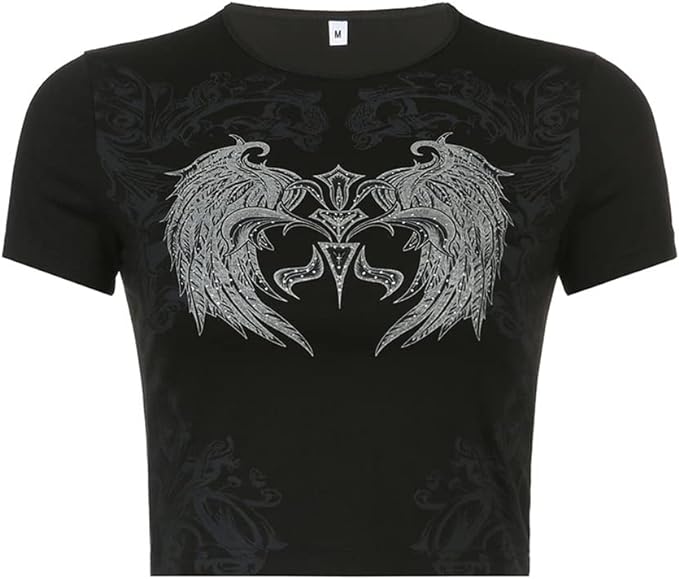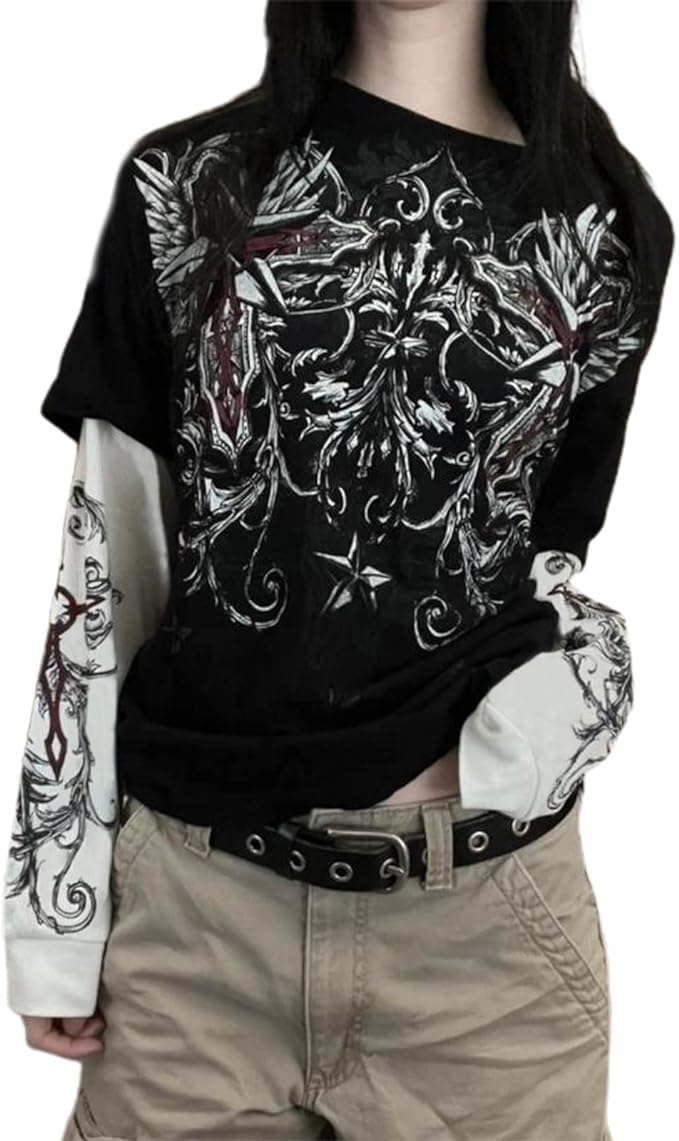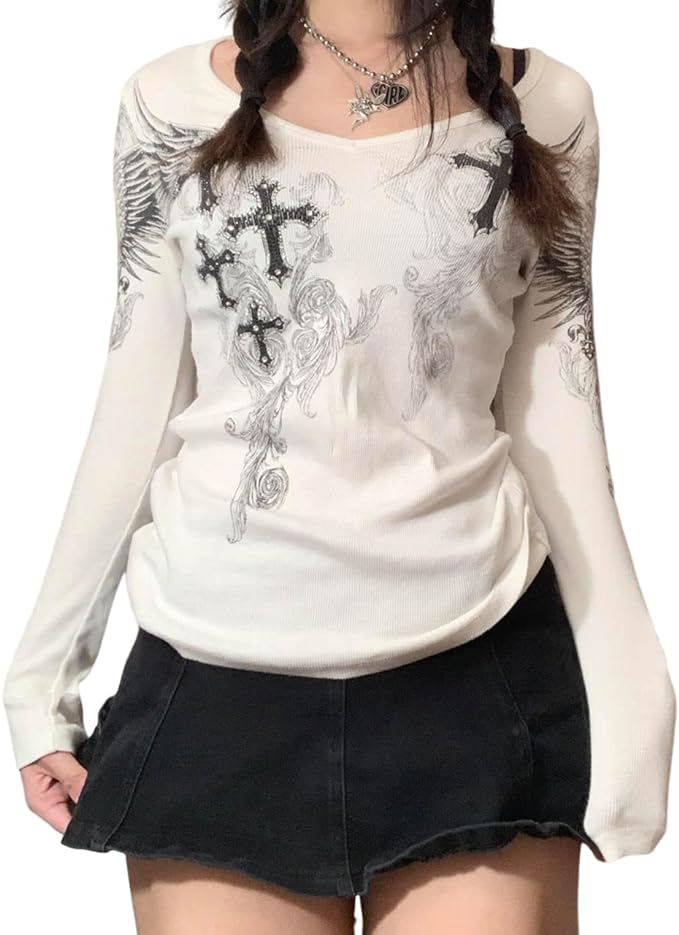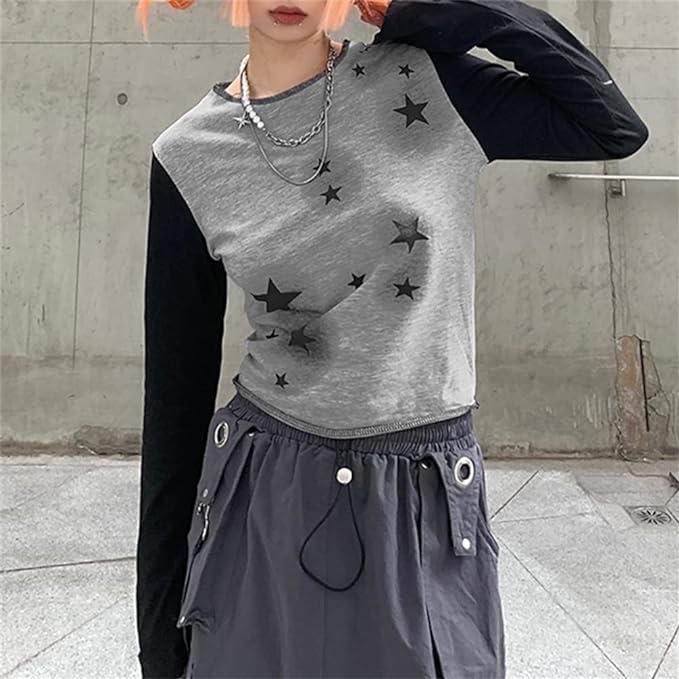Goth clothing is a distinct and unique fashion subculture that embraces darkness, individuality, and self-expression. In this article, we delve into the world of goth clothing, exploring its historical roots, the symbolism behind its style choices, the diversity within the subculture, ways to incorporate goth fashion into everyday wear, the influence of goth clothing on popular culture, and its enduring appeal as a form of artistic expression.

In This Article
I. Historical Roots of Goth Clothing
1.1 Origins in the Gothic Subculture
Goth clothing finds its roots in the Gothic subculture, which emerged in the late 1970s and early 1980s as a reaction against mainstream fashion and societal norms. Initially inspired by gothic literature and music, goth fashion evolved into a distinct style that embraced darkness, romanticism, and a sense of rebellion.
1.2 Influence from Punk and Post-Punk Movements
Goth clothing also drew inspiration from the punk and post-punk movements of the time. The DIY ethos and subversive attitude of these subcultures influenced goth fashion’s anarchic and alternative aesthetic. This fusion of influences resulted in a style that stood out from mainstream fashion, characterized by its dark color palette, layered clothing, and unique accessories.

II. Symbolism in Goth Clothing
2.1 Embracing Darkness and Macabre
Goth clothing is synonymous with darkness and the macabre. It embraces themes of mortality, decay, and the supernatural. Black, the predominant color in goth fashion, symbolizes mourning, mystery, and rebellion against societal norms. Accessories like skull motifs, crosses, and vampire-inspired elements further emphasize the subculture’s symbolic embrace of the dark and eerie.
2.2 Individuality and Self-Expression
Goth clothing is a means of self-expression and a way to challenge conventional beauty standards. It allows individuals to embrace their uniqueness, individuality, and alternative sensibilities. Through their fashion choices, goth individuals can express their personal tastes and showcase their non-conformist attitudes. Goth fashion serves as a visual representation of one’s identity, beliefs, and aesthetic preferences.

III. The Diversity of Goth Clothing
3.1 Sub-Styles within the Subculture
Goth clothing is not limited to a singular style; it encompasses a diverse and inclusive subculture with various sub-styles. Within the goth subculture, individuals have the freedom to explore and adopt different styles that resonate with their personal tastes and preferences. Traditional goth fashion, known for its dark and romantic aesthetic, is often characterized by flowing black garments, Victorian-inspired elements, and dramatic makeup. Romantic goth, on the other hand, embraces a softer and more whimsical look, featuring lace, ruffles, and intricate details. Cybergoth fashion infuses futuristic and cyberpunk elements with neon colors, PVC materials, and cybernetic accessories. Victorian goth draws inspiration from the Victorian era, incorporating corsets, high collars, and elaborate lacework.
3.2 Breaking Stereotypes and Challenging Boundaries
Goth clothing breaks stereotypes and challenges societal norms by showcasing a diverse range of aesthetics, identities, and body types. It embraces and welcomes individuals of different races, genders, and backgrounds. Goth fashion promotes inclusivity and provides a platform for individuals to express themselves authentically, regardless of societal expectations.

IV. Incorporating Goth Fashion into Everyday Wear
4.1 Integrating Gothic Elements with Mainstream Fashion
Goth fashion is versatile and can go beyond special occasions, allowing individuals to incorporate gothic elements into their everyday wear. This integration can be achieved through subtle yet impactful touches. One way to infuse goth fashion into everyday outfits is by adding statement accessories. This can include incorporating gothic-inspired jewelry, such as oversized silver rings or chokers adorned with crosses or intricate designs. These accessories instantly add a touch of goth flair to any outfit without overpowering the overall look.
Layering is another technique to incorporate gothic elements. By choosing sheer or lace fabrics, individuals can create dimension and texture in their outfits. A sheer black blouse paired with a lacy bralette underneath adds a hint of sensuality and gothic romance. Layering can also involve incorporating different textures, such as pairing a leather jacket with a flowing chiffon skirt, creating a juxtaposition of edginess and elegance.
4.2 Adaptation and Personalization
Goth fashion allows for adaptation and personalization based on individual preferences and comfort levels. It is not a rigid set of rules but rather a fluid and evolving mode of self-expression. Individuals can experiment with different elements of goth fashion, such as mixing goth-inspired pieces with their existing wardrobe or creating hybrid styles that combine goth with other fashion subcultures. This adaptability ensures that goth fashion remains dynamic and open to personal interpretation.
V. Gothic Fashion’s Impact on Popular Culture
5.1 Music and Icons: Influencing Music and Subcultural Icons
Goth fashion has made a significant impact on popular culture, particularly in the realm of music. Bands like Siouxsie and the Banshees, The Cure, and Marilyn Manson embraced goth fashion and became influential icons within both goth and mainstream communities. Their unique style and music resonated with audiences, solidifying goth fashion as an integral part of alternative music movements.

5.2 Film and Media: Representation and Inspiration in Popular Culture
Goth fashion’s distinctive aesthetic has also left its mark on film and media. Movies like “The Crow” and “Interview with the Vampire” showcased goth-inspired fashion and created iconic characters that resonated with audiences globally. Goth fashion’s influence is also evident in alternative fashion editorials, goth-themed photography, and even makeup trends.
VI. The Enduring Appeal of Goth Clothing as Artistic Expression
6.1 Unconventional and Avant-Garde
Goth clothing remains an enduring form of artistic expression due to its unconventional and avant-garde nature. It challenges societal norms and pushes the boundaries of mainstream fashion. The subculture continually evolves, incorporating new influences and adapting to contemporary aesthetics, making goth fashion a source of inspiration and innovation.
6.2 Embracing Individuality and Non-Conformity
Goth clothing’s enduring appeal lies in its embrace of individuality and non-conformity. It provides a platform for people to express themselves authentically and proudly. Goth fashion allows individuals to reject societal expectations and celebrate their uniqueness, ultimately fostering a sense of empowerment and freedom of self-expression.
In conclusion, goth clothing is a distinct and diverse fashion subculture that embraces darkness, individuality, and self-expression. It has historical roots in the Gothic, punk, and post-punk movements and holds symbolic meaning within its distinct aesthetics. Goth fashion’s enduring appeal lies in its ability to embrace diversity, challenge stereotypes, and provide a platform for artistic expression. As goth fashion continues to evolve, it will continue to captivate individuals seeking a form of self-expression that celebrates uniqueness and individuality.


